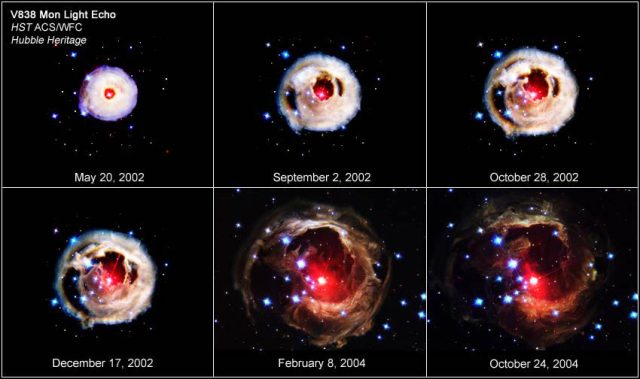Powerful stellar outbursts could be sign of dual-core stars
Ars Technica » Scientific Method 2013-01-24

Stars are plasma, gas ionized as the result of extreme internal temperatures. A solitary star will be mostly spherical under the force of its own gravity. However, when stars are in close binaries, their mutual attraction distorts their shapes. The extreme version of this is the common envelope stage, wherein the stars' outer regions merge to make a single, huge double star. According to theory, that is. While nobody seriously doubts this model, all the observational evidence for common envelope binaries is indirect.
A new Science paper proposes that a class of violent astronomical events that we've observed may be due to common envelope stars, providing more direct evidence for their existence. These cataclysms are known as "red transient outbursts," and in brightness terms, they're somewhere between novas (flares of nuclear activity at the surfaces of white dwarfs) and supernovas, the violent deaths of stars. N. Ivanova, S. Justham, J. L. Avendado Nandez, and J. C. Lombardi Jr. identified a possible physical model for these outbursts, based on the recombination of electrons and ions in the plasma when the stars' envelopes merge.
The most famous red transient outburst came from the star euphoniously known as V838 Monocerotis. Before 2002, nobody had noticed the star at all, but for a brief period of time, it expanded hugely, flared brightly, and shed an impressive amount of gas and dust into surrounding space. The Hubble Space Telescope (HST) tracked the outburst over the intervening years, but despite the regular check-ins, there is no widely accepted explanation for it.
Read 6 remaining paragraphs | Comments